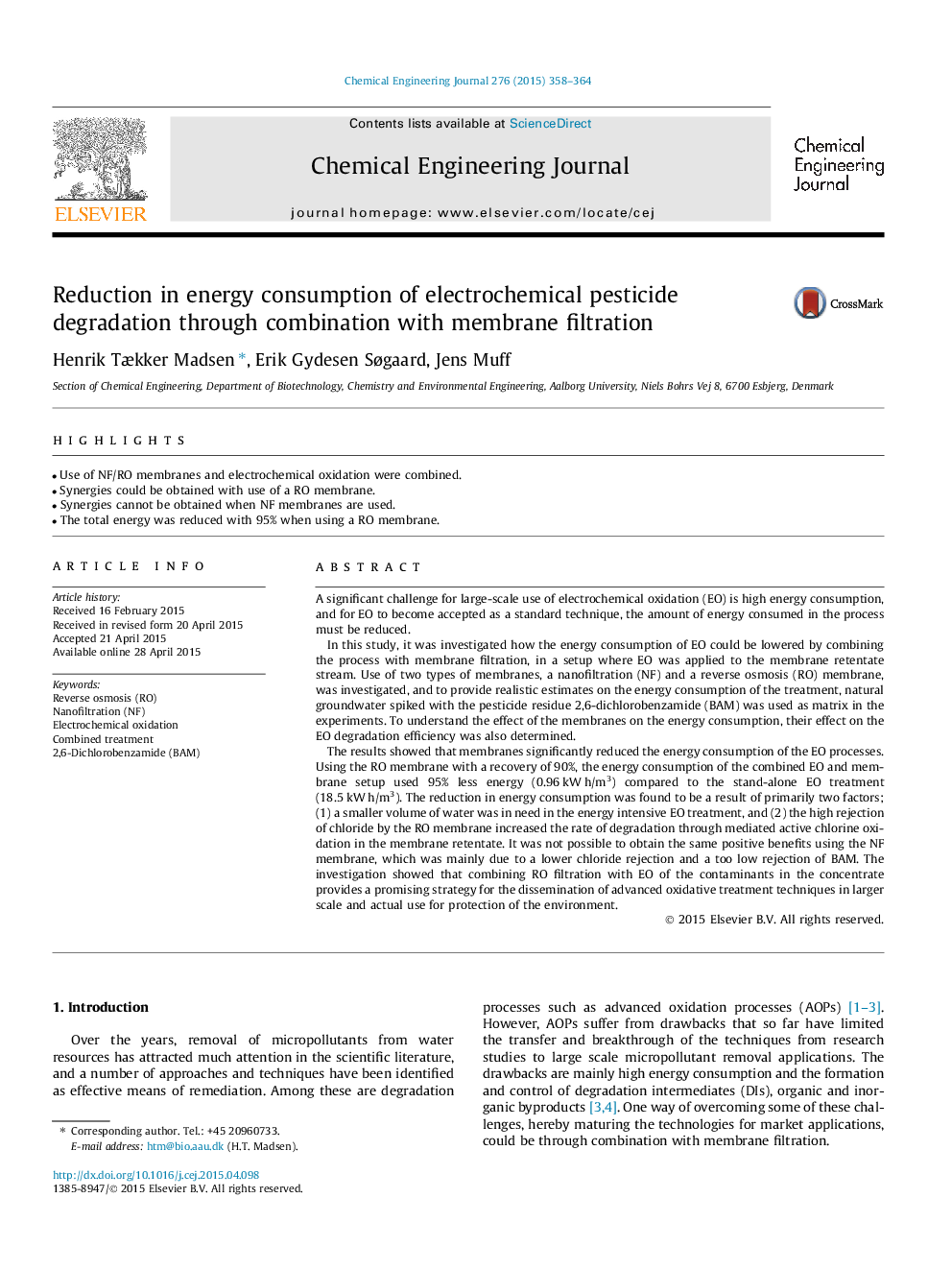| کد مقاله | کد نشریه | سال انتشار | مقاله انگلیسی | نسخه تمام متن |
|---|---|---|---|---|
| 146240 | 456364 | 2015 | 7 صفحه PDF | دانلود رایگان |
• Use of NF/RO membranes and electrochemical oxidation were combined.
• Synergies could be obtained with use of a RO membrane.
• Synergies cannot be obtained when NF membranes are used.
• The total energy was reduced with 95% when using a RO membrane.
A significant challenge for large-scale use of electrochemical oxidation (EO) is high energy consumption, and for EO to become accepted as a standard technique, the amount of energy consumed in the process must be reduced.In this study, it was investigated how the energy consumption of EO could be lowered by combining the process with membrane filtration, in a setup where EO was applied to the membrane retentate stream. Use of two types of membranes, a nanofiltration (NF) and a reverse osmosis (RO) membrane, was investigated, and to provide realistic estimates on the energy consumption of the treatment, natural groundwater spiked with the pesticide residue 2,6-dichlorobenzamide (BAM) was used as matrix in the experiments. To understand the effect of the membranes on the energy consumption, their effect on the EO degradation efficiency was also determined.The results showed that membranes significantly reduced the energy consumption of the EO processes. Using the RO membrane with a recovery of 90%, the energy consumption of the combined EO and membrane setup used 95% less energy (0.96 kW h/m3) compared to the stand-alone EO treatment (18.5 kW h/m3). The reduction in energy consumption was found to be a result of primarily two factors; (1) a smaller volume of water was in need in the energy intensive EO treatment, and (2) the high rejection of chloride by the RO membrane increased the rate of degradation through mediated active chlorine oxidation in the membrane retentate. It was not possible to obtain the same positive benefits using the NF membrane, which was mainly due to a lower chloride rejection and a too low rejection of BAM. The investigation showed that combining RO filtration with EO of the contaminants in the concentrate provides a promising strategy for the dissemination of advanced oxidative treatment techniques in larger scale and actual use for protection of the environment.
Journal: Chemical Engineering Journal - Volume 276, 15 September 2015, Pages 358–364
